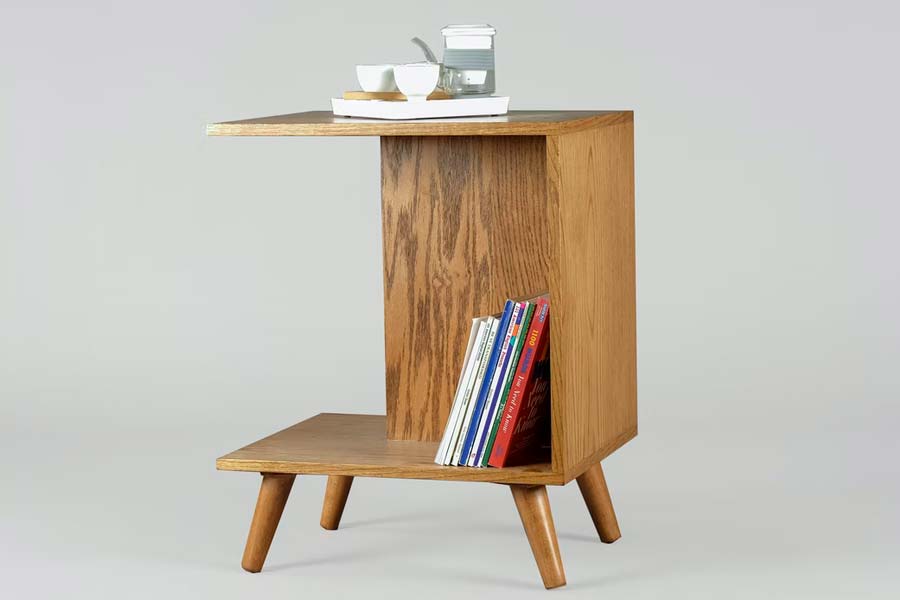A dresser is a versatile piece of furniture that can be used in various spaces in your home. On the other hand, a nightstand is typically used for storage and is often smaller in size than a dresser.
There are some essential differences between these two types of furniture that you should know before deciding which to buy for your bedroom. Here’s what you need to know about each:
What is a dresser?
Regarding furniture, a dresser is a type of chest of drawers. It can be helpful to think of a dresser as a taller, thinner version of a bureau.
Dressers are often chosen because they offer more storage space than other pieces of furniture of the same height and size. They’re also great for small spaces, as they take up less floor area than a bureau or chest of drawers. Another reason people might choose to buy a dresser is for the benefit of having clothes storage within easy reach.
What is a nightstand?

A nightstand is a type of small table that is typically placed next to a bed. It can hold a lamp, alarm clock, books, and other items. Nightstands come in various sizes and heights.
Some people choose to have a nightstand because it provides them with a place to put things within arm’s reach when in bed.
Others choose to have one because it helps raise the bed’s height so they can quickly get in and out.
Nightstands can be made from various materials, including wood, metal, and plastic. They may have one or more drawers, or they may have a shelf for storage.
How are the dresser and nightstand the same?
Regarding bedroom furniture, the dresser and nightstand are commonly used in bedrooms. They also have similarities in terms of materials to choose from.
They have a lot of different materials to choose from. Wood, metal, plastic, and glass are all popular options for dressers and nightstands. Each material has its benefits and drawbacks.
Wood is a classic choice for furniture. It’s strong and durable and can be stained or painted to match any decor. However, wood can also be expensive and needs to be regularly treated with a sealant to protect it from moisture.
Metal is another popular option for furniture. It’s strong and durable and doesn’t require any special treatment like wood does. However, metal can be heavy and easily show fingerprints and scratches.
Plastic is a budget-friendly option for families with kids or pets.
How are dresser and nightstand different?
So, what’s the difference between a dresser and a nightstand? After knowing the similarities between a dresser and a nightstand, it is time for us to review the differences. There are some obvious differences between dressers and nightstands. Here is the list:
Size: Nightstands are typically much smaller than dressers
Regarding furniture, size matters! Nightstands are typically much smaller than dressers and for a good reason. Nightstands are typically around 24 inches wide and 28 inches tall, while dressers are typically around 36 inches wide and 48 inches tall.
It is because nightstands are designed to hold just the essentials: a lamp, a book, maybe a glass of water. They don’t need to be as big as dressers because they don’t have to store nearly as much.
Nightstands also tend to be shorter in height than dressers, making them perfect for placing next to a bed. This way, you can easily reach everything you need without climbing up on a stool or bench. And if you have limited space in your bedroom, a small nightstand is the perfect solution.
Storage: Dresser has more storage than a nightstand
When it comes to bedroom furniture, the dresser has always been a popular choice over the nightstand.
And for a good reason – a dresser typically offers more storage space than a nightstand. It can be a real benefit, especially for those short on bedroom storage space.
Another advantage of a dresser is that it can be used as a vanity. If you don’t have room for a separate vanity in your bedroom, you can use the top of your dresser instead. It can be a real space saver, and it’s also convenient if you like to get ready in bed in the morning.
If you are looking for extra storage space in your bedroom, a dresser is better than a nightstand. Nightstands are smaller and usually have less storage space. A few different bedroom dressers are shown below:
Style: Dresser has more variety of styles than a nightstand
When it comes to bedroom furniture, there are a few must-haves staples. A bed, dresser, and nightstand are common furniture pieces in bedrooms across the country.
While both dressers and nightstands have their unique benefits, some argue that dressers are the clear winner when it comes to various styles and benefits.
Dressers offer more variety of styles than nightstands. From modern to traditional, there is a dresser out there for everyone. Nightstands tend to be more limited in style options, with most people opting for a simple design with minimal details.
Price: Nightstands are usually less expensive than dressers
Are nightstands more expensive than dressers? That depends on each piece of furniture’s make, model, and materials.
Generally speaking, nightstands are less expensive than dressers. It is because dressers are larger and typically include more features than nightstands.
However, some high-end nightstands can be more expensive than some dressers. So, it depends on what you are looking for in each piece of furniture.
A nightstand is a great option if you are looking for an affordable piece of furniture that will still provide plenty of storage space.
Nightstands are usually smaller and simpler in design than dressers, so they tend to be less expensive. You can find basic models for as little as $50 or $60, while more elaborate designs can cost up to $200 or $300.
Purpose: Nightstand store smaller things than dresser
The primary purpose of a dresser is to provide storage space for clothing, accessories, and other belongings.
A dresser typically has more drawers and shelves than a nightstand, making it ideal for storing larger items.
The benefit of having a dresser in your bedroom is that you can keep your clothes and accessories organized and easily accessible.
On the other hand, a nightstand is primarily used to store smaller items such as books, lamps, phones, and tablets. It typically has fewer drawers and shelves than a dresser, making it better suited for small items.
So, which one is right for you?
When it comes to furniture for your bedroom, one of the most critical pieces is the dresser. But what if you don’t have enough room for a dresser? Or maybe you’re unsure if a dresser is suitable for you? In that case, you might want to consider a nightstand.
Nightstands are an excellent option for small bedrooms and can also be used in place of a dresser in larger bedrooms. They’re typically smaller than dressers, so they take up less space, and they’re perfect for storing small items like books, glasses, or a watch.
Dressers are better suited for storing large items like clothes or bedding, but a nightstand is a good choice if you’re looking for somewhere to put your alarm clock or lamp.
Ultimately, the best choice for you depends on your needs and preferences. If you need extra storage space, go with a dresser. If you want a more minimalistic look, go with a nightstand.
Why choose between a dresser and nightstand when you can have both?
When you’re looking for furniture for your bedroom, the options can seem endless. Do you want a dresser? A nightstand? Why choose between the two when you can have both?
There are many benefits to having a dresser and a nightstand in your bedroom.
For one, they offer different functions. The dresser is perfect for storing clothes and other belongings, while the nightstand is excellent for placing items like a lamp, alarm clock, or book. This way, you don’t have to sacrifice functionality by choosing one piece of furniture over the other.
Another advantage to having a dresser and nightstand is that they can add visual interest to the room. You can create a look that’s uniquely yours by choosing different styles or colors.









